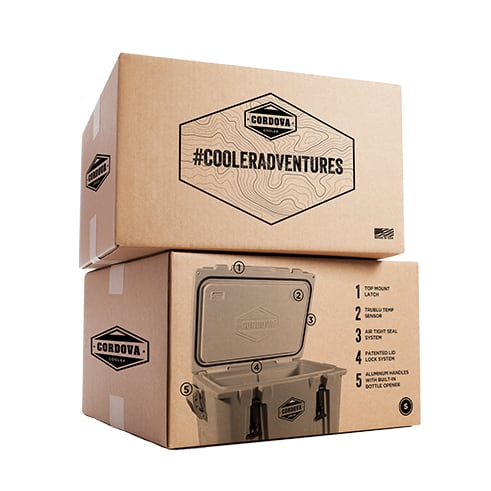Beyond the Screen | Strategies for Successful Television Advertising Campaigns
December 21, 2023
In a world dominated by digital platforms, television advertising may seem like a thing of the past. However, it remains one of the most effective tools for building brand awareness and driving customer engagement. The key lies in adapting traditional TV advertising to align with modern trends, leveraging technology, and integrating it with digital campaigns to maximize results.
The Enduring Value of TV Advertising
TV advertising continues to hold a unique place in the marketing landscape. While it requires a significant investment, its unparalleled reach and ability to deliver high-quality, emotionally resonant messages make it a worthwhile endeavor for businesses of all sizes.
Current Industry Data and Trends
Recent studies show that despite the rise of digital platforms, television accounts for 33% of all video advertising spend globally. Streaming services (OTT platforms) are rapidly expanding, with 85% of households now subscribing to at least one service. This shift offers new opportunities for advertisers to target audiences through programmatic TV, enabling precise targeting similar to digital ads.
Even younger demographics, who primarily consume content online, report high recall and trust in TV ads. In fact, 78% of millennials and Gen Zers believe TV advertising lends credibility to brands—a level of trust that many digital-only ads struggle to achieve.
Tips for Crafting a Successful TV Ad Campaign
1. Understand Your Audience Through Data
Deep audience insights are crucial for success. Use tools like Nielsen ratings, social media analytics, and OTT platform data to build detailed viewer personas. For instance, brands like Toyota use audience segmentation to target specific age groups and lifestyles across both linear and streaming TV.
2. Craft a Message That Resonates
Your ad should deliver a clear and memorable message. Focus on how your product or service solves a problem or fulfills a desire. Coca-Cola’s “Share a Coke” campaign, for instance, combined personalization and emotional storytelling to engage viewers and drive sales worldwide.
3. Leverage Modern TV Advertising Formats
Modern TV advertising extends beyond traditional 30-second spots:
- OTT Advertising: Platforms like Hulu allow advertisers to insert targeted ads based on viewing habits.
- Addressable TV: Tailor ads to households with specific demographics or purchase histories.
- Interactive Ads: Enable viewers to engage with your ad by scanning QR codes or clicking on smart TV screens.
For example, Domino’s Pizza used interactive ads on smart TVs, allowing customers to order directly while watching their favorite shows—a seamless integration of convenience and engagement.
4. Embrace Storytelling
A compelling narrative creates an emotional connection, making your brand memorable. Apple’s holiday commercials often combine storytelling with stunning visuals and relatable emotions, leaving lasting impressions.
5. Focus on Visual Excellence
Invest in high-quality production, even on a smaller budget. For example, Dollar Shave Club’s low-budget yet creative and humorous ad went viral, proving that storytelling and authenticity can outshine high production costs.
6. Integrate Digital and TV Advertising
Digital and TV campaigns should complement each other for maximum impact:
- Retarget viewers who’ve seen your TV ad with related social media ads.
- Sync calls to action across platforms to reinforce your message. For example, Nike’s “You Can’t Stop Us” campaign aired on TV and was supported by a robust digital presence, creating a cohesive experience.
7. Analyze and Adapt
Data is your best friend in optimizing campaigns. Platforms like Google Analytics, along with OTT analytics, can measure performance, such as viewer engagement and conversion rates. Netflix used audience data to promote its series “Stranger Things” with a campaign that blended TV, social media, and experiential marketing, creating a cultural phenomenon.
Why TV Advertising Works
Reach and Trust
Television’s broad reach ensures your message is seen by diverse audiences. Its inherent credibility makes it ideal for brand-building, particularly when paired with engaging content and a professional production.
Real-World Case Study: Geico
Geico’s memorable and consistent advertising campaigns—featuring humorous characters like the gecko—demonstrate the power of combining brand recognition with entertainment. Over time, these campaigns have driven substantial growth, making Geico one of the top insurance providers in the U.S.
Small Budgets, Big Impact
Even local businesses can make waves with TV ads. By focusing on authenticity and regional relevance, small brands like Squatty Potty used humor and clever storytelling to achieve national recognition on a modest budget.
The Future of TV Advertising
With the rise of programmatic buying and data-driven targeting, TV advertising is becoming increasingly sophisticated. Interactive ads, personalized content, and cross-platform campaigns are reshaping how brands connect with audiences. As more brands embrace these trends, television remains not just relevant but indispensable.
Final Thoughts
Television advertising is no longer confined to a single screen—it’s a multimedia experience that integrates with digital platforms to amplify impact. Whether you’re a large corporation or a small business, leveraging the latest trends, focusing on audience insights, and adopting a multi-channel strategy can ensure your campaigns resonate with viewers and deliver measurable results.
By combining the emotional power of TV with the precision of digital, you can create campaigns that go beyond the screen—building connections, inspiring action, and driving loyalty.




























